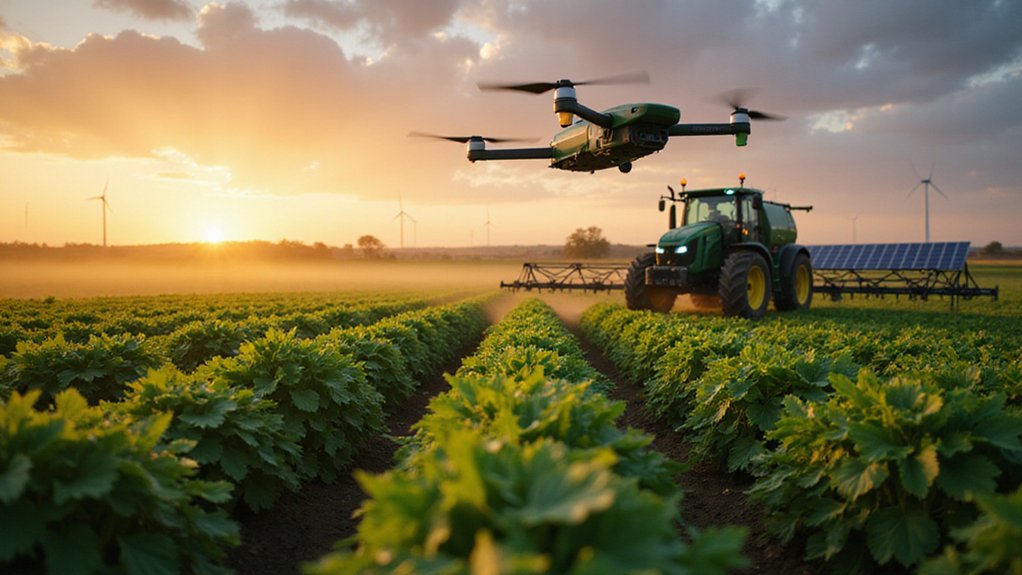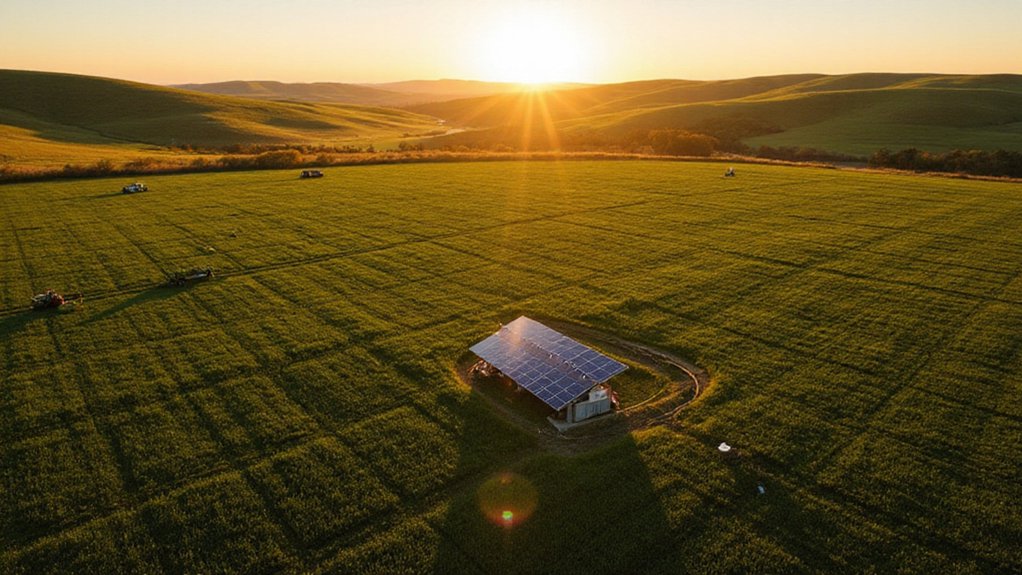As Virginia’s terrain increasingly transforms with shiny solar panels stretching across former farmlands, tensions are growing between clean energy advocates and rural communities. Since 2016, more than 30,000 acres have been converted to utility-scale solar fields, pushing the state to become the eighth largest for installed solar capacity in the nation.
Virginia’s rural landscape is rapidly changing as solar panels replace crops, igniting conflict between green energy supporters and farming communities.
The boom has been dramatic. Solar now generates 13% of Virginia’s total power, with capacity exceeding 4,800 megawatts across about 100 facilities statewide. This rapid growth stems from several factors, including soaring energy demands from AI and data centers, plus the 2020 Virginia Clean Economy Act that requires carbon-free energy by 2050.
But this expansion faces mounting resistance in rural areas. Many residents worry about losing productive farmland and the changing character of their communities. Local governments have responded by creating tougher zoning restrictions to limit where solar projects can be built.
The stakes are high. Projections show solar development could claim between 78,000 and 147,000 acres by 2035. In the most aggressive scenario, this could convert up to 3.1% of Virginia’s cropland to solar fields. Research reveals that about 50% of solar arrays were built on former forest land, while 28% on cropland and 11% on pasture land.
Supporters point to significant benefits: solar is the cheapest new electricity source available, and the industry could create up to 29,000 jobs statewide. Solar projects also boost local tax revenues and enhance energy security. In fact, several major tech companies including Meta, Amazon, and Microsoft have made substantial investments in Virginia’s solar sector, further driving development.
Recent policy changes aim to address concerns. The state has adopted an “all-of-the-above” energy approach that balances solar with other sources like nuclear and natural gas. Community solar programs are expanding to increase access and reduce opposition. Unlike solar, geothermal energy requires minimal land use compared to other renewable sources, which could provide an alternative path forward in land-constrained areas.
Despite the pushback, Virginia’s clean energy evolution continues. Solar remains central to the state’s carbon-free grid goal for 2050. As collaborative efforts to reform solar siting policies move forward, finding middle ground between rural preservation and renewable energy needs remains the challenge at the heart of Virginia’s energy future.
References
- https://news.vcu.edu/article/2025/03/vcu-researchers-assess-land-impacts-of-virginias-solar-industry–now-and-in-the-future
- https://www.energy.virginia.gov/renewable-energy/SolarPower.shtml
- https://seia.org/state-solar-policy/virginia-2/
- https://vcnva.org/clean-energy-climate-recap-2025-bill-outcomes/
- https://www.eia.gov/state/print.php?sid=VA








